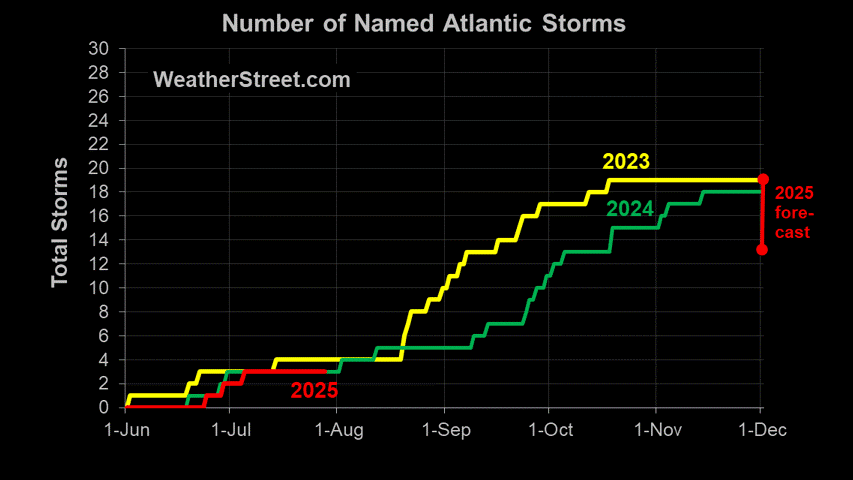In the
first part of this essay on how El Nino affected the tropics, the focus was on how the effects of El Nino resulted in a fairly mild hurricane season in the North Atlantic and Gulf of Mexico. The primary effect is the increase in vertical wind shear which prevented storms from organizing or tore them apart soon after they developed.
An exception to this includes Hurricane Bill which lashed out at the entire east coast of the US and Canada. Looking back over a decade ago, Hurricane Andrew hit heavy into south Florida during an El Nino year. The entire year of 1992 was very calm except for one storm, Andrew, which made its trek across the Atlantic during the second half of August.
Several factors come into play to determine the number and intensity of tropical storms. We tend to focus on warm water - sea surface temperature - as the primary driver for formation. During the past couple of years we have come to recognize the role of vertical shear in destroying or preventing the formation of organized storms.
How does El Niño affect hurricanes? (Mother Nature Network)
But hot water alone doesn't cause hurricanes. Tropical wind, waves and weather must all cooperate to form the rotating thundercloud clusters that become monster cyclones. Even a slight variation could send a hurricane crashing into the ocean, and this year there's an extra twist: El Niño is sniping from the other side of Mexico, blowing the tops off many Atlantic tropical storms before they fully form.
"Upper-level winds from the west come across the Caribbean Sea, produce increased wind shear, and that's what hinders hurricane activity," says Gerry Bell, lead seasonal hurricane forecaster for the National Weather Service's Climate Prediction Center. "El Niño is so large, and the tropical Pacific is just right there across Mexico, so it's not a far distance, actually."
--snip--
Despite El Niño's help, however, U.S. and Caribbean coasts still aren't completely clear either. Just as it takes more than warm water to build up a hurricane, it often takes more than wind shear to tear one down.
"El Niño is not the only climate player in the game," Bell says. "For the Atlantic and Pacific, [hurricane] activity is strongly affected by tropical climate patterns that can last for decades at a time. That includes warmer water across the tropical Atlantic, and stronger monsoonal rains and low-pressure systems coming off of Africa. That really sets the stage for more activity."
Additionally, long term climate patterns including the Atlantic Multi-decadal Oscillation (MDO)have a large effect of the frequency and intensity of hurricane formation. In 2004, Florida was hit by four severe storms back to back including two blows by Hurricane Ivan who, after bashing Florida, decided to loop around, swipe Florida again and slam into Texas just for grins. In 2005, we saw the devastation brought on by Katrina, Rita and Wilma. Additionally, 2005 saw the most named storms in the Atlantic basin ever.
The knee-jerk reaction to this high hurricane activity is that it was the clear result of global warming - specifically Anthropogenic Global Warming - warming caused by human activity. Hurricane experts including Dr. William Grey of Colorado State University and others very quickly showed how this high activity corresponded to the high activity portion of the Atlantic MDO. High hurricane activity had been recorded in the 1930's and 1940's and had now returned in the time since around 1995. During the 1970's and 1980's, activity was low.
Around 2005, the expectation was that the high activity could last another 10 - 15 years. Right now we have the higher than average hurricane activity, caused by or correlated to the MDO fighting the effects of El Nino and even dry dusty air coming off the coast of Africa as we had last year and the year before. The dust also prevents hurricane formation by disrupting convection and circulation.
With so many competing mechanisms, the laws of probablility really play a major role in determining how many storms we get in a given year and how intense they are. El Nino is a HUGE climatic factor that has an effect on the weather patterns world-wide. Those of us in the attack zone of the Atlantic, Gulf of Mexico and Caribbean Sea can be thankful that El Nino generated conditions that resulted in a low activity year this year. Next year will be a different story.





















